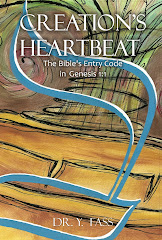If there is a Creator, how might He speak to us and how can we check our understanding of what is said? How can our enquiry proceed in a methodical way and with what guidelines and reference points?
Part One sets out four bases for a rigorous approach, including ten tests to be applied to its results. Using traditional techniques, we examine the Hebrew of the first four words to see what it tells us. We consider the letters in the order and form that they occur; there is no shake or shuffle or number counting.
The Creator of life evidently knows how to compress, transfer and secure vital information. Therefore, let us set our expectations of what the opening words of Genesis can reveal to us unreasonably high. That way, our expectations cannot possibly be met by the human reason of a human author.
Part Two: Ten Steps to Understanding
The first verse of the Bible unlocks the basis of the moral order that is integral to the nature of creation itself. This sets the heartbeat for all of creation.
In no other account is there a being who completely transcends all of creation and who simply speaks things into existence. The universe is presented as the product of a single, creative will. To explore the first verse is to explore the nature and resolution of the consequent divide.
The opening verse teaches us that our job is to bring into the open that which is hidden. Step by step, Part Two pursues this through examining each of twenty-six components yielded by the first four words. We find both a shadow and a resolution in the beginning. We find dualities, dilemmas and concealment. The reader is repeatedly challenged by the text. Yet, as we press in, a coherent and recurring pattern is revealed that points to a history and plan for creation.
Part Three: Understanding Gained
The first verse in Genesis poses a severe dilemma. When unpacked, these same few words provide a profound resolution and history. Details, nuances or emphases can be debated, but the form of the entry code is unmistakable. Through ten steps, we have examined twenty-six components that cohere together in a design that meets the tough tests proposed initially.
Part Three sets out the Bible’s entry code and shows that the pattern it reveals is foundational to the Hebrew Bible. That design precedes all and is prophetic to all of creation. The interweaving of physical and spiritual aspects gives us an inkling of how the Creator has embedded this pattern throughout creation. Yet, by its nature, the design is itself hidden, just as the giving of the Torah on Mount Sinai to Moses was hidden from the people. The story is incomplete. Its uncertainty and concealment are for our sake: its message confronts us. The full completion awaits our decision.
